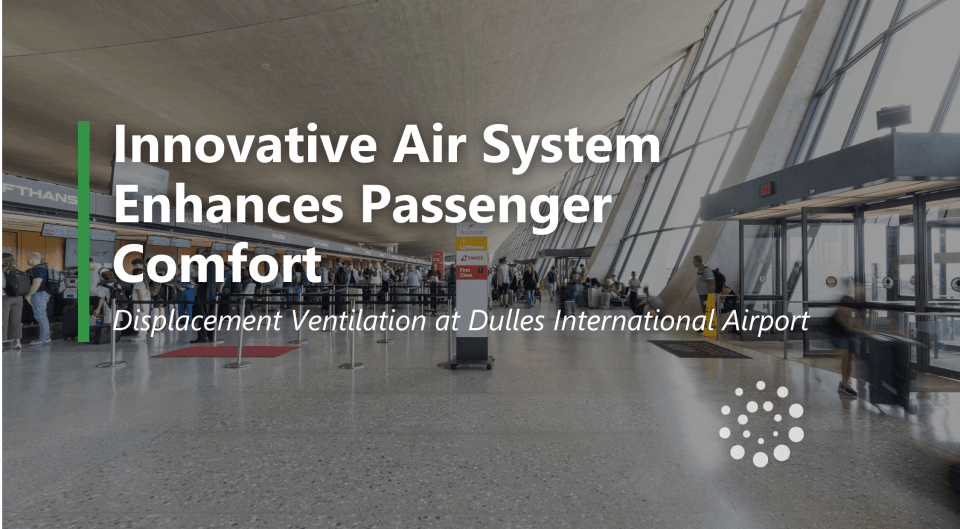Washington Dulles International Airport's new Tier-2 Concourse East is set to enhance passenger experience and operational efficiency with a state-of-the-art displacement ventilation system designed by CMTA. As the HVAC and plumbing engineer for the expansion project, CMTA faced a range of challenges, including an aggressive timeline, maintaining architectural aesthetics, and ensuring uninterrupted airport operations. By employing innovative strategies, the team delivered sustainable, efficient, and superior indoor air quality outcomes for the 410,000-square-foot facility.
A central challenge was the implementation of displacement ventilation, a system that delivers conditioned air at low velocities directly at the occupant level. This approach avoids traditional overhead ductwork, maintaining the terminal’s expansive and open atmosphere. To achieve this, CMTA partnered with Price Diffusers to design custom teardrop diffusers that integrate seamlessly into the concourse's columns, a feature crucial to the architect's vision for the space. Through advanced computational fluid dynamics (CFD) modeling conducted by Price Diffusers, CMTA confirmed the system’s effectiveness, ensuring both aesthetic appeal and functionality.
This innovative system enhances passenger comfort by supplying air at more neutral temperatures (in the mid-60s, compared to traditional systems in the mid-50s) and utilizing non-turbulent airflow that gently rises and circulates. The result is a uniform temperature gradient with no noticeable drafts, providing both comfort and improved indoor air quality. The system’s design reduces the recirculation of air, ensuring a healthier, fresher environment—an essential feature for high-traffic public spaces like an airport terminal.
CMTA’s solution also uniquely addressed energy efficiency. By using return air that naturally rises to the top of the terminal for "free" reheating, the system eliminated the need for complex reheat systems reliant on hot water or electric resistance. Instead, the system relies on a second energy recovery wheel to provide regulated reheat temperatures. This strategy not only avoided the installation of expensive heat recovery or run-around loops but also generated substantial savings—approximately $1.17 million in construction costs and around $204,500 in annual energy costs. Furthermore, this system aligned with the stringent energy standards required to achieve the targeted LEED Silver certification.
Collaboration was key to the success of this project. CMTA worked closely with ProAire, the mechanical contractor, as well as Turner Construction and PGAL, to ensure all systems were seamlessly integrated while staying on schedule. The outcome is a cutting-edge concourse that not only prioritizes sustainability and energy efficiency but also redefines passenger comfort and experience.
The new concourse, scheduled for completion in 2026, represents a significant upgrade to the airport’s infrastructure, adding amenities such as larger operational spaces, shops, restaurants, and ADA-compliant facilities. However, it is the innovative displacement ventilation system that stands out as a game-changing feature, blending engineering excellence with passenger-focused design for a future-ready airport experience.
